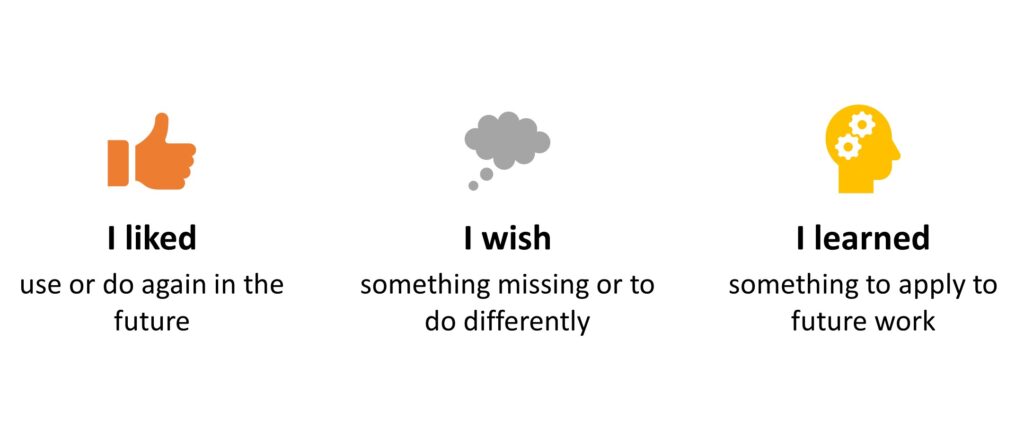Dr. Katrina Foxton at MicroBiomics – a rising company in the biotech sector – knows her team is highly talented. Yet on project after project she sees them fall into the same pitfalls. Katrina wonders, “Why can’t we learn?”
Team Learning Isn’t Natural
Perhaps it’s because team learning isn’t natural. Software expert Norm Kerth once said, “I am usually worn out at the end of one of my alligator-infested swamp draining projects. The act of reflecting on my just-finished project is not naturally a high priority. Yet it is the key to ensuring that my next project will have less water to drain and fewer alligators to manage.”
Dr. Foxton may agree that intentional reflection sounds good, but who has the time? To make learning fast and easy, I like the LWL technique (catchy name, huh?). Here’s how.

How to Use LWL
Grab pads of sticky notes and gather the people on your team. Ask them to reflect on their project, with an eye toward the future. What worked well and should be repeated on future projects, what should be done differently, and what learnings apply to future work? Ask each person to post their ideas, one per sticky, on flip charts labeled “I liked,” “I wish,” and “I learned.” (If you’re meeting online, use an online whiteboard or an app like Miro.)
Once the action settles down, discuss how to act on the themes that emerge from the stickies. Appoint volunteers to pursue action on the major themes. This can be a very fast learning activity – you can get initial feedback in 15 minutes. Of course, following up on all the good ideas may take longer!
Benefits
LWL has many virtues.
- Simplicity: It’s simple but structured. In a busy world, simple things are more likely to get done.
- Balanced: No one likes to hear only about problems. “I liked” encourages participants to capture good things while “I wish” reminds them to consider potential improvements.
- For all: It involves everyone in creative learning and improvement.
- Action: It goes beyond reflection to action. “I learned” nudges each participant to take some personal ownership of improvements.
Like Dr. Foxton, the next time you want your team to improve, try a learning technique like LWL. What’s your favorite way to help your teams learn from their experiences?
